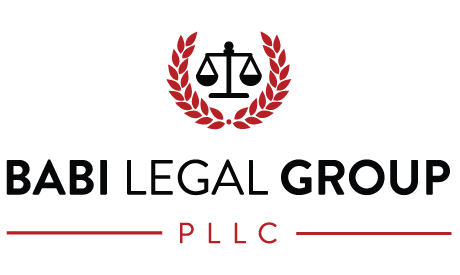Bankruptcy Foreign Assets
Imagine your financial life is where you owe a lot of money to different people or companies, and it takes time to manage. You’ve heard about different bankruptcy chapters, which can help you eliminate most of your debts and give you a fresh start.
Suppose you possess a residence, financial account, real estate investment property, or any other valuable possession beyond the nation’s borders. In that case, you must declare these holdings in your bankruptcy application. A foreign representative cannot explain and help you understand the American bankruptcy proceeding.
While the bankruptcy trustee might need more authority to disclose these internationally, such an assumption is, in truth, inaccurate. Certain or potentially all of these valuable resources may be eligible for protection under the Bankruptcy Code, yet their disclosure remains mandatory.
Neglecting or failing to apprise your bankruptcy lawyer of offshore assets during the submission of either Chapter 7 or Chapter 13 bankruptcy is synonymous with concealing wealth. Such behavior may lead to rejecting your bankruptcy claim, potential legal charges, and asset(s) forfeiture.
Revealing Overseas Property in Your Bankruptcy Petition
Bankruptcy submission ought to be a transparent procedure. Despite the ability to safeguard certain assets from liquidation, it is imperative to declare your possessions, irrespective of their geographic whereabouts, openly.
Even though specific foreign asset holdings may be granted exemption status within the bankruptcy framework, it remains obligatory to acknowledge their existence. The act of concealing assets can potentially culminate in the levying of criminal charges, the dismissal of your bankruptcy application, or, in extreme cases, the complete forfeiture of the concerned property.
As an integral aspect of the documentation, the bankruptcy court will scrutinize your financial affairs spanning the preceding ten years you file it. If the investigators unearth fraudulent endeavors, you may be ineligible for bankruptcy discharge benefits.
Unveiling Overseas Property to the Trustee in Bankruptcy
You can’t keep things secret when you decide to go through bankruptcy. You need to tell the people in charge about everything you own or anything you might have a claim to. This includes stuff like your house, car, and all your belongings. You have to list them out on specific forms in your bankruptcy application.
When you ask the government for help to get rid of your debt through bankruptcy, it’s like asking for a big favor. They’ll usually say yes, but in return, they want to ensure you’re not trying to trick them or hide anything. So, they need to know everything about your money and the things you own to check if you’re being honest.
The US Trustee’s Office watches over bankruptcy cases. If they discover you didn’t tell them about an asset, they could stop your bankruptcy case and even bring up criminal charges against you.
The US Trustee’s Office Explained
The U.S. Trustee Program is a national organization with much power regarding bankruptcy. Their main job is to ensure the bankruptcy system is fair and works well for everyone involved – people who owe money (debtors), the people or companies they owe money to (creditors), and the general public.
Here’s how they do it:
Administrative Power
They have the authority and jurisdiction to set rules and guidelines for bankruptcy cases in any part of the country. Think of it as creating a fair playbook for everyone to follow.
Regulatory Power
They oversee and regulate the people and organizations involved in bankruptcy cases, like a bankruptcy creditor and a bankruptcy trustee. This helps ensure that everyone in bankruptcy fraud follows the law.
Litigation/Enforcement Power
If someone does something wrong in a bankruptcy case, like trying to cheat or break the rules, the U.S. Trustee Program can take legal action against them. This helps keep the system honest.
Their ultimate goal is to ensure the bankruptcy process is fair, efficient, and trustworthy. This way, when someone goes through bankruptcy, they can have confidence that things will be done right and that everyone will be treated fairly. It’s all about making the bankruptcy system work well for everyone involved.
Securing Your Global Assets In Bankruptcy Court
Whether you’re a natural-born U.S. citizen with holdings abroad or an immigrant who still possesses international assets overseas, it’s prudent to consider enlisting the services of a bankruptcy attorney. They have the knowledge and experience necessary to tackle the complexities associated with international property and bankruptcy. Full disclosure remains imperative even if certain global assets or other property are safeguarded during bankruptcy.
A Michigan bankruptcy lawyer can assist you in identifying which assets may qualify for exemption and which may not be exempt. Following a thorough assessment of your circumstances, our bankruptcy attorneys may explore alternative courses of action to bankruptcy. If bankruptcy emerges as the most viable path forward, rest assured that Babi Legal Group will provide expert guidance throughout the appropriate chapter filing procedure.
Managing Your Overseas Bankruptcy Estate
In simpler terms, involving a bankruptcy attorney when you have foreign assets outside the United States and deal with bankruptcy is wise.
A bankruptcy attorney knows the bankruptcy code. He can advise you about the ins and outs of handling international property in bankruptcy. Even if some of the value of your overseas assets is protected, you must tell everyone about them.
The Importance of Michigan Legal Counsel
A bankruptcy lawyer can assess the present estimated worth of the asset. Depending on the nature of the property, they can gauge the potential challenges the bankruptcy trustee might face in establishing connections in a specific foreign country. They can also provide a preliminary estimate of the associated costs.
However, it’s essential to note that the final determination about your bankruptcy estate and foreign assets rests with the bankruptcy trustee. The trustee holds the ultimate authority in deciding whether they will proceed with liquidating an asset not designated as exempt in your bankruptcy documentation.
A Michigan bankruptcy lawyer can help figure out which foreign assets can be liquidated and kept safe and which can’t. They’ll also look at other options besides bankruptcy if that’s possible.
Babi Legal Group will guide you if making a bankruptcy petition is the way to go. You can feel peace if you have a bankruptcy attorney who helps you protect your overseas assets.
So, the bottom line is this: When you’re going through bankruptcy, you have to be completely honest about what you own and how much it’s worth. This helps the government decide how your creditors get paid and how much they get.
Whether you’re doing Chapter 7 bankruptcy or Chapter 13 bankruptcy, it’s the same – you can’t hide stuff, or it could lead to serious trouble.








































































